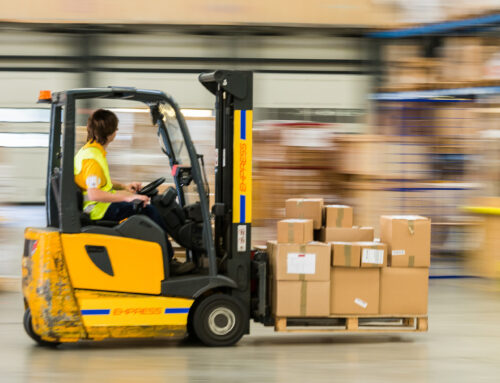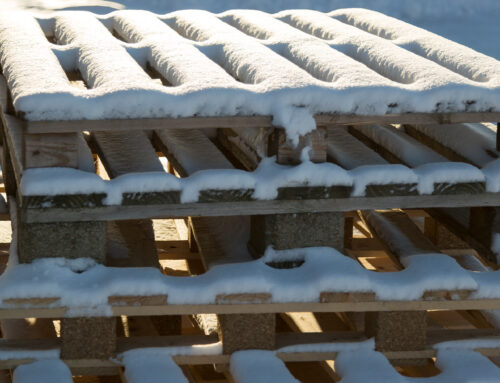Thinking of bamboo, images of pandas and Asiatic wilderness might come to mind, certainly not the North American lumber industry. That might change over the next few years.
In the 2020s, the lumber industry has seen unprecedented volatility, increased demand, and unsteady supply. What if there was a way to supplement the lumber industry and mitigate these issues? What if we told you that part of the solution could be a type of grass?
Certain bamboo species are becoming increasingly popular with a handful of manufacturers across the globe. These early adopters are seeing the benefits of new bamboo manufacturing processes, a quick harvesting cycle, and surprising strength. Today, we’ll look at the potential benefits and shortfalls of bamboo from an unbiased perspective.
A Unique Manufacturing Process
Because bamboo is largely hollow, a unique manufacturing process has to take place before the “wood” of the bamboo can be used like traditional lumber.
Unlike many hardwood and softwood species, bamboo has unique, fibrous properties that must be addressed before additional manufacturing processes can begin. After splitting bamboo stems into strips, both the bark and internal fibers must be removed.
With the fibers removed, the now board-like strips are left to dry, much like lumber. The lower the moisture content, the sturdier the material becomes. Once these strips are dried, the bamboo can then be pressed into boards, flooring, or other products.
Bamboo intended to be used in industrial environments, however, must undergo additional manufacturing to be tough enough for the job. Through a process combining layers of bamboo, heat, and glue, a hardened composite bamboo can be created. This engineered bamboo is then ready for industrial use.
Although the current industrial applications are significantly limited, with advancements in manufacturing techniques, some manufacturers plan to use engineered bamboo in dunnage, crates, and even wholesale pallets.
Speed, Sustainability, and Sourcing
One of the largest issues that have faced the lumber industry throughout the years is the rate at which trees grow. For hardwood species, the harvesting age can be anywhere from 40-60 years – needless to say, this poses some issues for long-term supply. For softwood, the circumstances are much better. Only taking 20-30 years to reach maturity, softwoods can be planted in cycles and allow the lumber industry to keep up with demand.
Bamboo, however, is the fastest-growing plant on the planet. Some species, granted these species aren’t suited for industrial use, can grow up to 3 feet a day! Species like Bambusa Balcoa, a tough and resistant bamboo similar to hardwood, is ready to harvest in only 5-6 years. With the ability to grow in poor soil conditions and with very little rainfall, Bamboo species like this could very well be part of the solution to some of the problems that face the lumber industry.
From a sustainability perspective, Bamboo has a unique advantage as well. Much like the Bermuda grass that grows in your yard, bamboo regrows as well. This kills two birds with one stone. Because of its regrowth, much less space is needed for planting. On the other hand, bamboo harvesting doesn’t kill the plant. With many trees, the chances of survival after harvesting are slim to none. With each harvest, the cycle of carbon absorption begins again – bamboo puts the “reuse” in reduce, reuse, recycle.
Although there may be some substantial benefits to using bamboo, there are also some drawbacks. For example, the glue used to create strong engineered bamboo materials is anything but environmentally friendly. Along with this, comes the problem of bamboo sourcing.
Although the future of use for bamboo may look promising, the lack of current bamboo farming in North America may prove to be a problem. Being a primarily tropical plant, bamboo needs relatively high temperatures and moisture to grow. In the United States, this poses a significant issue as most land that could be used to farm bamboo is currently being used for the farming of citrus fruits and other crops that need this type of environment.
Surprising Strength
Whether industrial lumber is being used for general use, pallets, crates, or even dunnage, manufacturers from any industry rely on the woods’ strength to get the job done right. In a market where lumber availability has been a problem in the past, supplementing the current nationwide lumber supply with a sustainable and strong alternative could prove useful.
With a tensile strength that’s stronger than steel and a strength-to-weight ratio that’s similar to Southern Yellow Pine, bamboo’s characteristics could prove promising in the future. Implementing the materials into traditional products such as pallets or crates could very well be around the corner.
The secret to Bamboo’s strength can be found at the molecular level. With a unique composite structure of fibers, mature timber-grade bamboo is known to be one of the strongest materials on the planet.
Aside from this, Bamboo can also thank gravity for its strength. Unlike trees, which grow up and out repeatedly over time, the largest species of Bamboo only reach around 12 inches in diameter. Despite this, the tallest species of Bamboo can reach 100 feet tall, putting immense pressure on the structure of the plant. With the exponential forces being applied by gravity, bamboo has been forced to evolve to maintain its height and structure.
The biggest downside to bamboo’s strength is that it’s fleeting. Without substantial manufacturing methods, raw bamboo can break down very quickly when exposed to the elements. Unlike lumber, which can hold its shape and form for a long period, bamboo begins to degenerate fairly quickly without the applications of glues or resins.
Is the Future Bamboo? Maybe.
Needless to say, the natural attributes of bamboo are certainly interesting. With surprising strength, the ability to regrow quickly, and a unique, yet fairly simple, manufacturing process, there may be some promise for this plant going forward.
However, the lack of farming land available and bamboo’s lack of longevity both pose significant issues to overcome. Only time will tell how, if, and when manufacturers may find a solution to these problems. Whatever the case may be, someday, bamboo could become a popular product for manufacturers.






